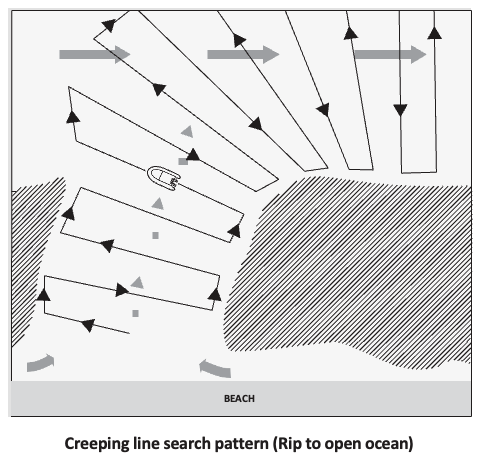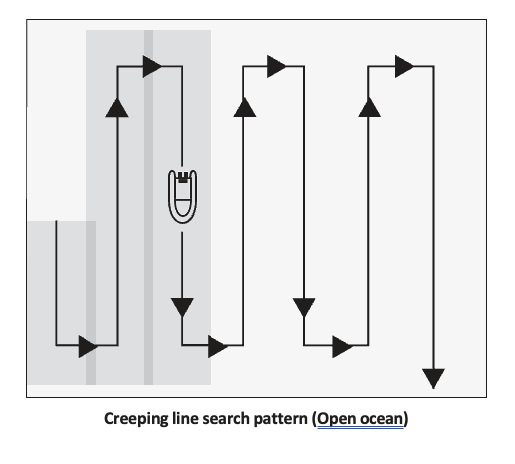Purpose
To provide guidelines regarding creeping line search patterns.
Policy
Surf Life Saving NSW (SLSNSW) provides the following guidelines to assist personnel in effectively performing their duties.
Procedure
A creeping line search pattern would be used when there is a stronger probability of the craft or person in distress closer to one end of the search area.
There are two different types of creeping line search patterns, these are:
- Rip to Open Ocean
- Open Ocean
Rip to Ocean
A rip to ocean creeping line search is to be utilised in inshore conditions when the last known position of the patient/s were in a rip current, and the current direction is known. This search pattern should also be utilised when undertaking search and rescue operations in river and creek mouths and bars.
When undertaking a rip to ocean creeping line search the following steps should be utilised:
- The search pattern shall begin at the last known position.
- Crews shall take a visual reference or drop a buoy and anchor as a surface marker. This will then provide a continuous reference point during the search.
- The search pattern should follow the direction of the current. The search lines taken should be close enough so that there is a continuous overlap of vision throughout the search.
- Crews shall work from the last known position, down current, observing the change from rip current to ocean current. Crews shall alter the heading of the search accordingly with the current.
Open Ocean
An open ocean creeping line search is to be utilised in open ocean or flat water conditions. This search pattern is to be utilised when the direction of the current or wind is known.
When undertaking an open ocean creeping line search the following steps should be utilised:
- The search pattern shall begin at the last known position.
- Crews shall take a visual reference or drop a buoy and anchor as a surface marker. This will then provide a continuous reference point during the search.
- The search pattern should begin following the direction of the current or wind. The line taken should be close enough so that there is a continuous overlap of vision throughout the search.
- Crews shall work from the last known position and move along search lines that are equally spaced.




